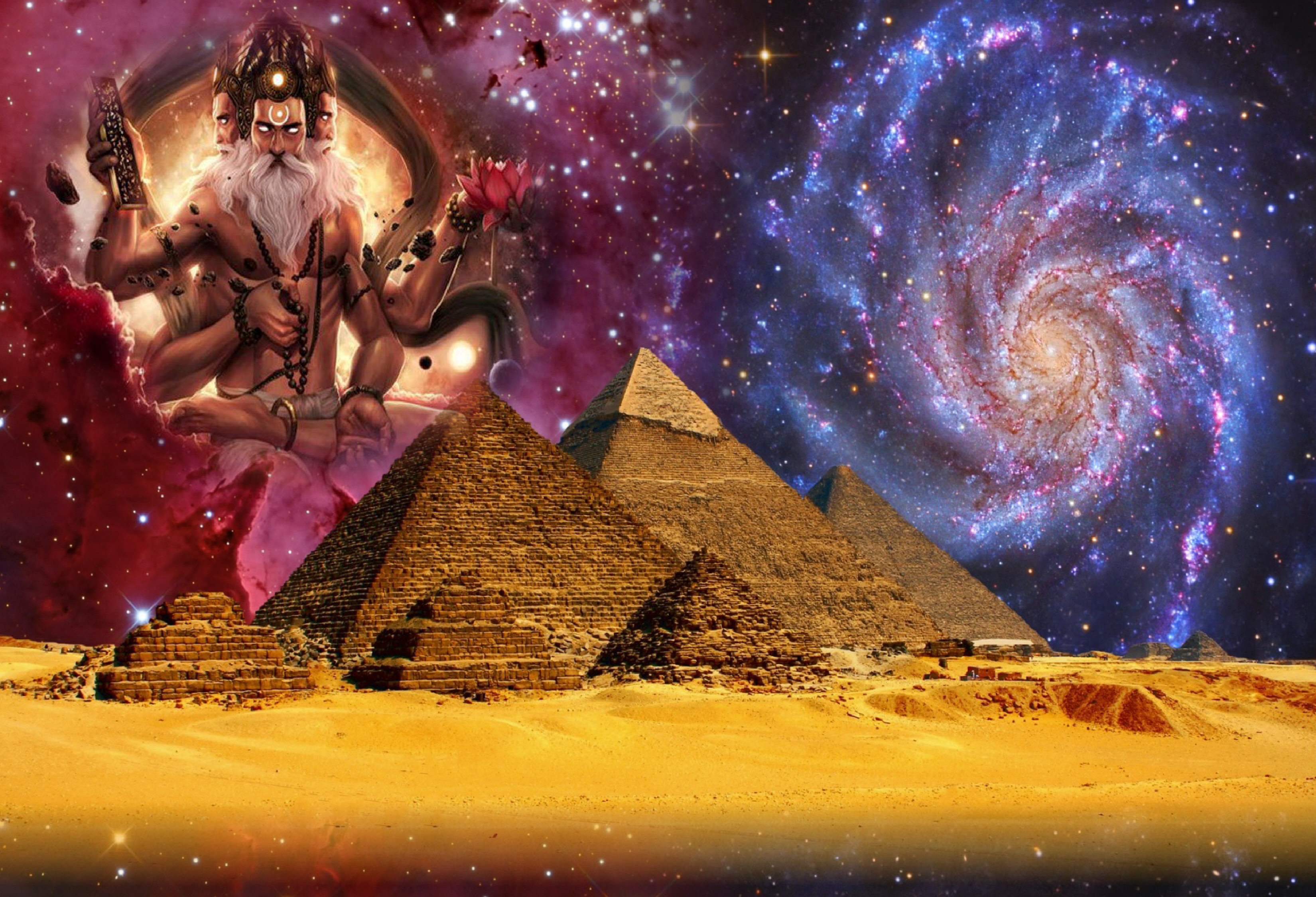 Submitted by Henry on
Submitted by Henry on

derivative images
The Hindu dharma began as a civilization than the ‘dharma’ itself. Nowadays, the world’s political nature has curved the real meaning of the Hindu dharma.
But, there are no present-day anthropologists and historians that may deny what influence the Hindu dharma has around the world. Moreover, there are certain historical positions which related this civilization with the one of Egypt.
The civilization of Egypt.
The word Egypt comes from ‘Ajap,’ a Sanskrit word which is the symbol of Lord Rama, who was the most distinguished forebearer of the clan Aja. In fact, Aja was his grandfather. In the traditions of the Hindu, some rulers like Rama were believed to be God’s descendants. Also, in the Egyptian civilization, the Pharaoh was considered their God and even their descendants too. Their names were Rameses I or also II.
The connection between the two civilizations.
From some ancient sources, it is said that Egypt’s history dates back from thousands of years in time, during Yayati’s times. He was known as the one with two wives, Sharmishtha and Devayani. When he became old and depressed, he required from his son Yadu, the eldest one, to make an exchange of his youth and his father’s old age.
However, he refused, just like the rest of his sons did. But, Puru, his youngest son, decided to give his father a helping hand. So, he has been crowned the sovereign of the world. Also, they were called Puravas, later being called the Pharaohs of Egypt. Pura ruled over the domain of his father.
Comparison of Vedic civilization and Egyptian civilization.
In fact, there are several similarities between the Vedic and Egyptian civilization. Biornsttierna takes into account the transmigration, pre-existence of souls, principal trinity, division of the case into warriors, priests, traders, agriculturists, which are the principal essence of the two of the systems.
Also, the symbols of the Nile and Ganga’s shores are the same. If you take a look at the Phallus of the Egyptian Ammon temples, you will see Shiva Linga as well. In the two cultures, the lotus flower symbolizes the Sun and immortality of one’s soul. In Shiva’s temples, they are said to have the strength to render a barren woman fruitful, and this is also the case of Ammon’s temple in Egypt.
The contacts that India has with the western world are quite known, but contacts with some ancient civilizations are still not known.
There is one significant cultural relation, and it is in worshiping of the sun, cow, river, and snake in the two of the cultures.
Evidence from present-day.
Recently, there was proof which shows some contact between the two civilizations: Egypt and India. The connection was understood thanks to the Lothal terracotta mummy which resembles an Egyptian mummy or another similar Mohenjodaro terracotta mummy.
The mummies were said to have been wrapped in Indian muslin. Gordon Childe wrote about some Egyptian motifs and objects which indicate the contact which existed between Egypt and India at the time of the so-called Indus Valley Civilization period.
Lotus flower mystery.
Cross-cultural and history contents are not able to explain the authentic parallels made between the imagery and the myths of Egypt and India during ancient days. One German scholar wrote that the lotus, which is a flower sacred to Osiris and Buddha, has its five petals that are the symbol of the head and four limbs; they also symbolize our five senses and the five digits.
But, not just the symbol, even mathematics has shown to have some influence than earlier Christianity. According to one American mathematician, the Shulbasutras, or ancient Vedic mathematics science, constitutes this science in the ancient world of the city of Babylon.
According to imagery, the lotus flower was prolifically shown how it grows out of the water, opening its petals with the help of the Sun’s warmth. The flower was associated with the fertility goddess Sri in the Vedic tradition. After that, it invoked the goddess Lakshmi, the one of abundance and wealth.
In the Egyptian tradition, the blue flower was seen among the earliest paintings on the wall of the VI Dynasty, like in the Saqqara pyramid. Then, this flower became the leitmotiv, being the symbol which connects water with the sun, earth with sky, signifying regeneration and fertility.
- 5647 reads